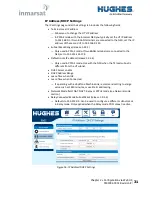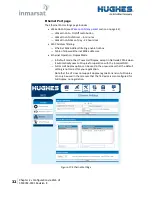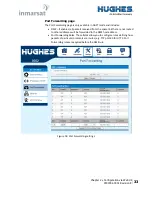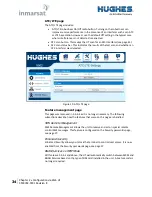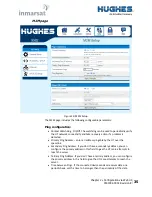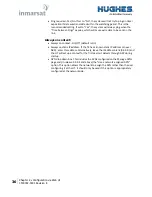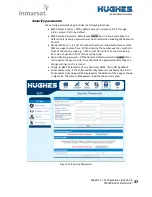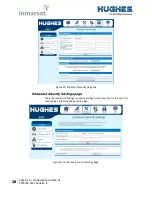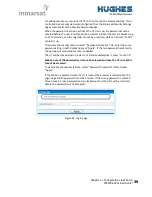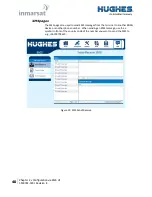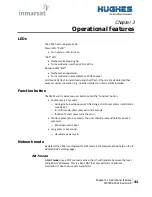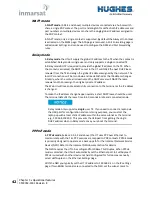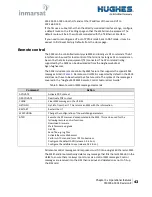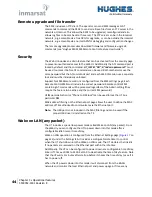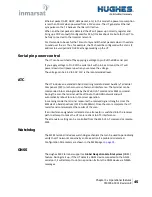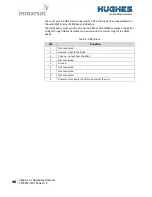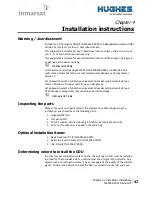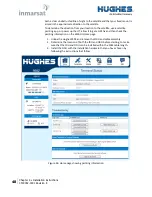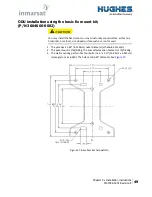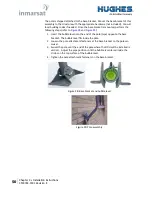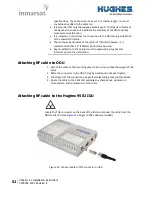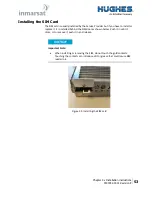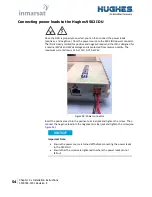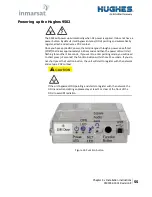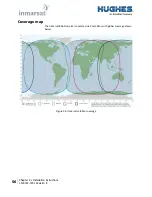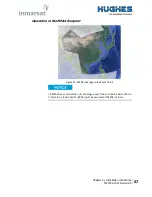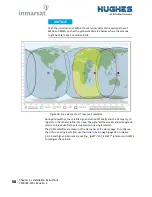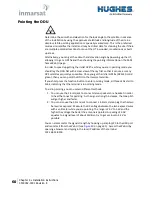
Chapter 3
•
Operational features
3500782-0001 Revision E
45
Ethernet packet (ARP, DHCP, data packet, etc). In this mode the power consumption
is less than 10mW when powered from a 12V source. The UT generates Ethernet
sync pulses so the TE believes the link is still active.
When an Ethernet packet is detected the UT will power up normally, register and
bring up a PDP context (if configured for ACA.) It takes about 1 minute for the UT to
be fully connected to the Inmarsat network.
For this mode to be useful the TE must only send Ethernet packets when it has data
to send over the air. Thus, for example, the TE should be configured with a static IP
address to avoid periodic DHCP exchanges waking up the UT.
Serial pin power control
The UT can be switched off by applying a voltage to pin 9 of the DB9 serial port.
If you apply voltage to Pin 9 of the serial port with pin 5 as Ground, the UT will
power down. It will power up when you remove the voltage.
The voltage can be 2.5V to 50V. 12V is the recommended level.
ATC
The UT includes an extended L-band scanning mode to detect Auxiliary Terrestrial
Component (ATC) or other sources of external interference. The terminal can be
commanded into scanning mode by the Web UI, AT command or SMS command.
During the scan the terminal will be offline to the BGAN network and will
automatically reboot to return to normal operation.
In scanning mode the terminal measures the received signal strength across the
41MHz of L-band spectrum (1518 to 1559MHz). Once the scan is complete the UT
restarts and communicates the results of the scan.
If an interference signature is detected, an attenuator is switched into the receiver
path to attempt to make the UT more resilient to ATC interference.
The attenuator setting can be controlled from the Web UI, AT command or remote
SMS.
Watchdog
The M2M terminal includes a watchdog mechanism that can be used to periodically
verify the UT network connectivity and take action if a problem is detected.
Configuration Parameters are shown in the M2M page
on page 35
GNSS
The Hughes 9502 terminal supports a
Global Navigation Satellite System
(
GNSS)
feature. During start up, if the UT detects a GNSS device connected to the GNSS
serial port, it will attempt to obtain a position fix from the GNSS device via NMEA
messages.

